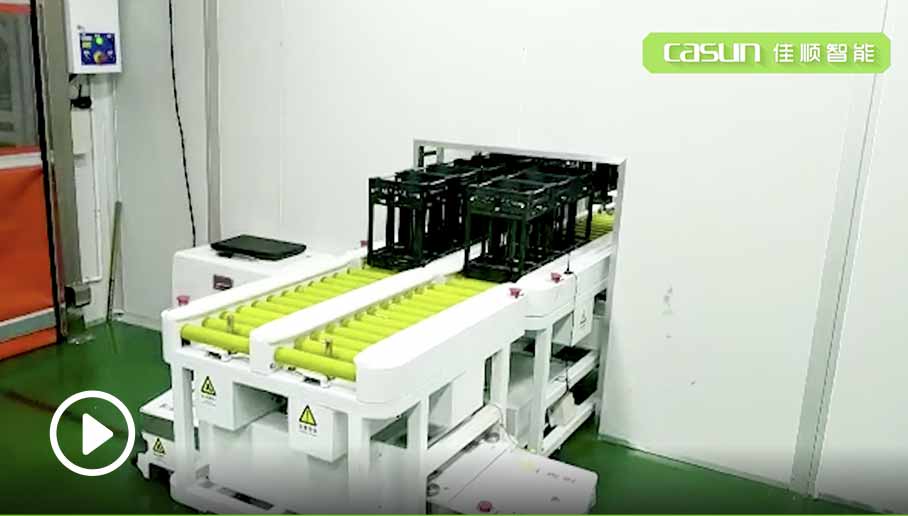 Focus on AGV industry for 18 years
Focus on AGV industry for 18 years
 Focus on AGV industry for 18 years
Focus on AGV industry for 18 years
This overseas project involves a highly complex production environment, where the smart logistics system needs to cover multiple key processes such as engine assembly, hot testing, and warehousing. In the face of diverse production demands, the system must ensure efficient material flow between different areas to maintain the stability and continuity of the production line. This places higher demands on the flexibility, intelligence, and real-time responsiveness of the production system.
JiaShun Intelligent Robotics provides an innovative smart logistics solution to help the client continuously enhance its international competitiveness. Through intelligent scheduling and precise handling, the solution improves the overall efficiency of the production line. At the same time, the solution ensures that the AGV system is capable of adapting to rapidly changing market demands, maintaining an excellent ability to respond and a stable production rhythm, enabling the company to maintain a leading position in the competition.

The system must maintain stable operations across different shifts, particularly during night shifts, where issues such as insufficient lighting and increased operational complexity need to be addressed.
AGVs/AMRs must be able to flexibly coordinate across multiple workstations, ensuring timely material delivery and preventing production line stoppages due to delays in operations.
The system should ensure smooth integration between AGVs/AMRs, manual forklifts, temporary storage areas, and warehouses. This will minimize material losses or operational errors caused by poor docking and integration.

To meet the diverse demands of the PACK flexible production line for this overseas project, JiaShun Intelligent Robotics designed and implemented a highly flexible smart logistics solution:
Modular Workstation Integration: By integrating with the automation systems of each workstation, the AGV/AMR can flexibly switch tasks based on the production schedule. Each workstation is equipped with intelligent interfaces for quick response, allowing the AGV/AMR to automatically select the next target after completing a task, improving operational efficiency.
Collaborative Operation and Traffic Management: When multiple AGVs/AMRs are operating simultaneously, the system uses intelligent traffic management algorithms to dynamically adjust the operating paths of each AGV/AMR, avoiding cross-interference and ensuring efficient operation. This mechanism reduces the risk of production bottlenecks and enhances overall production capacity.
Data-Driven Production Optimization: By deeply analyzing the operating data of the AGVs/AMRs, the system can identify potential areas for efficiency improvement and automatically generate optimization suggestions. This data-driven approach ensures continuous improvement of the production process and helps quickly respond to market changes.


Through the intelligent scheduling system, AGV/AMRs enable efficient material transfer between engine assembly, hot testing, and warehousing processes, ensuring production continuity and stability.

AGV/AMRs can quickly adapt to different production needs, supporting short-term plan adjustments and unexpected orders, enhancing the flexibility and market responsiveness of the production system.

Based on in-depth analysis of AGV/AMR operational data, the system identifies inefficiencies and generates optimization suggestions, enabling continuous improvement of production processes and helping enterprises rapidly respond to market changes while maintaining a competitive edge.

Equipped with multiple protective mechanisms such as laser sensors, collision warnings, and automatic shutdown functions, ensuring the safety and reliability of human-robot collaboration environments, reducing accident risks and equipment damage, and ensuring stable operation at the production site.
